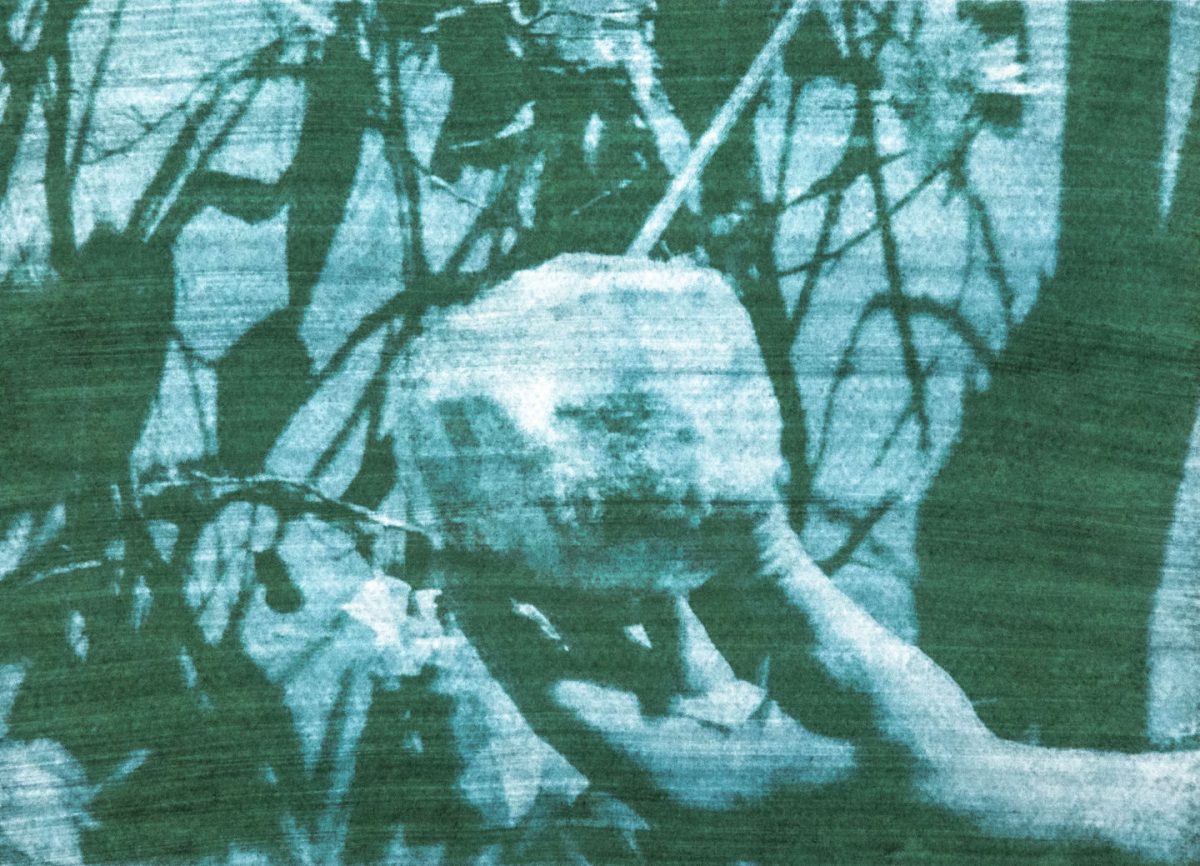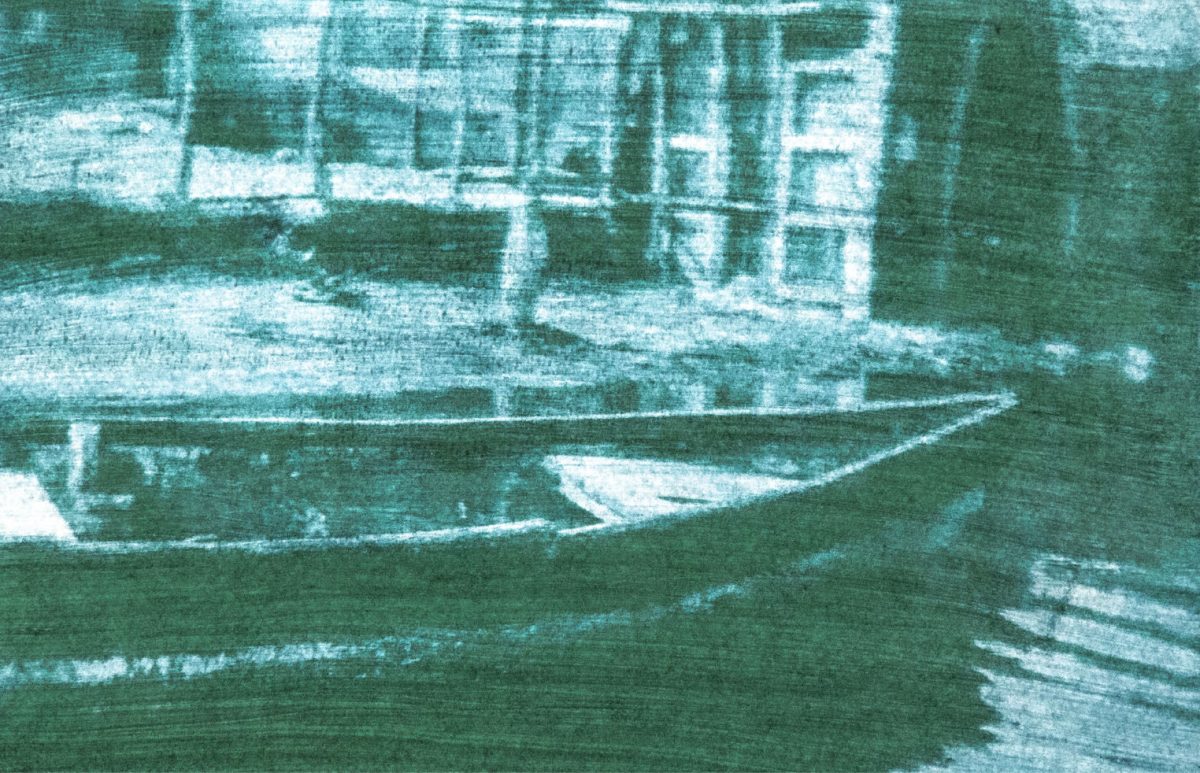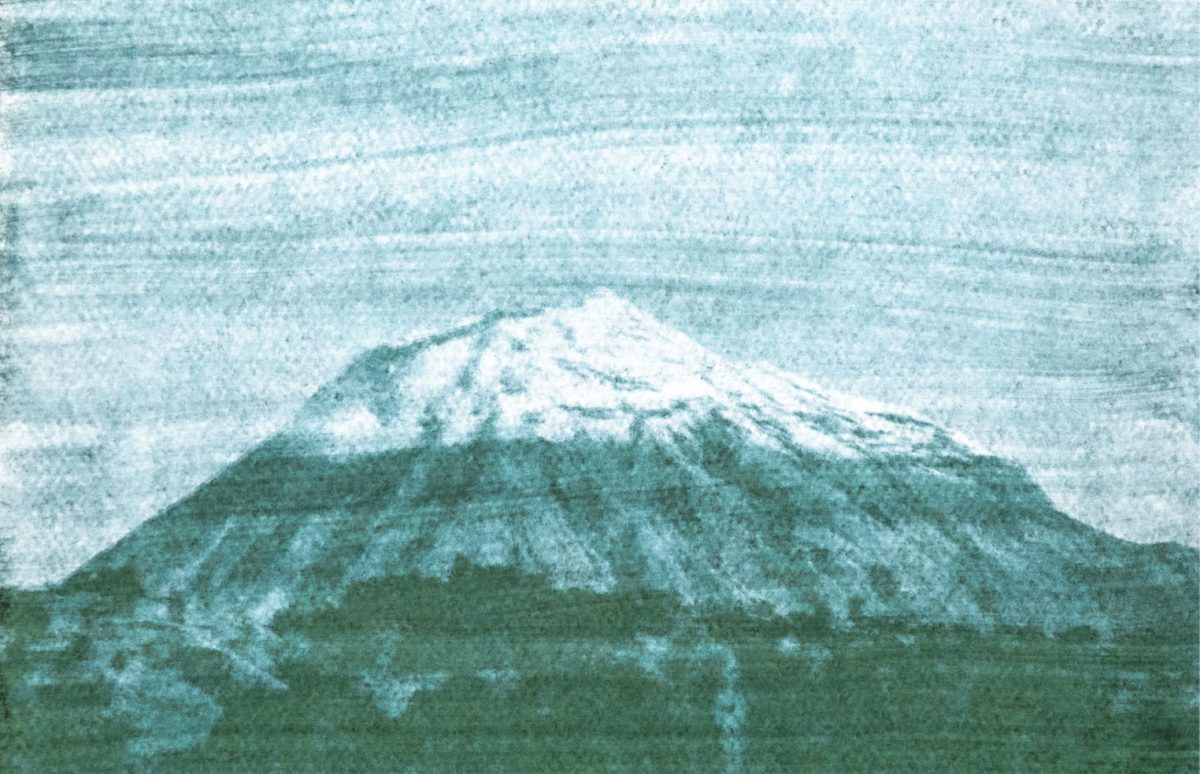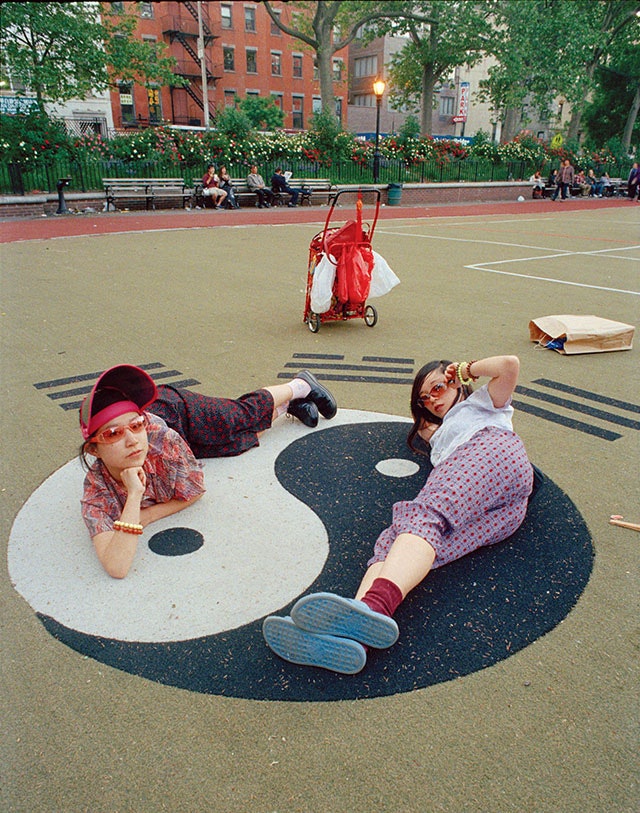From issue: #20 The Graduate Issue 2023
The Garden of Eden: Solar Equator depicts a real place in Banos de Agua Santa, Ecuador where the world divides into two hemispheres. It was made using a research-based, experimental anthotype process, designed as an alternative to toxic photographic traditions, and proposing a sustainable approach by using materials with living, regenerative materials. Spirulina, a biomass of cyanobacteria and microalgae, uses photosynthetic pigments such as carotenoids, phycobilins, and cholorphyll, for example, which absorb energy from light; the images shown here were recorded by using the photosensitive properties of microalgae as an emulsion, and the sunlight as a developer. In using these processes, Orjuela aims to question her position as a photographer and the environmental footprint of her work, and to reach for a “clean art”. She hopes to start a conversation on the future of art, sustainability, and regenerative design, she says, providing solutions which will help fix the broken systems we have all inherited.
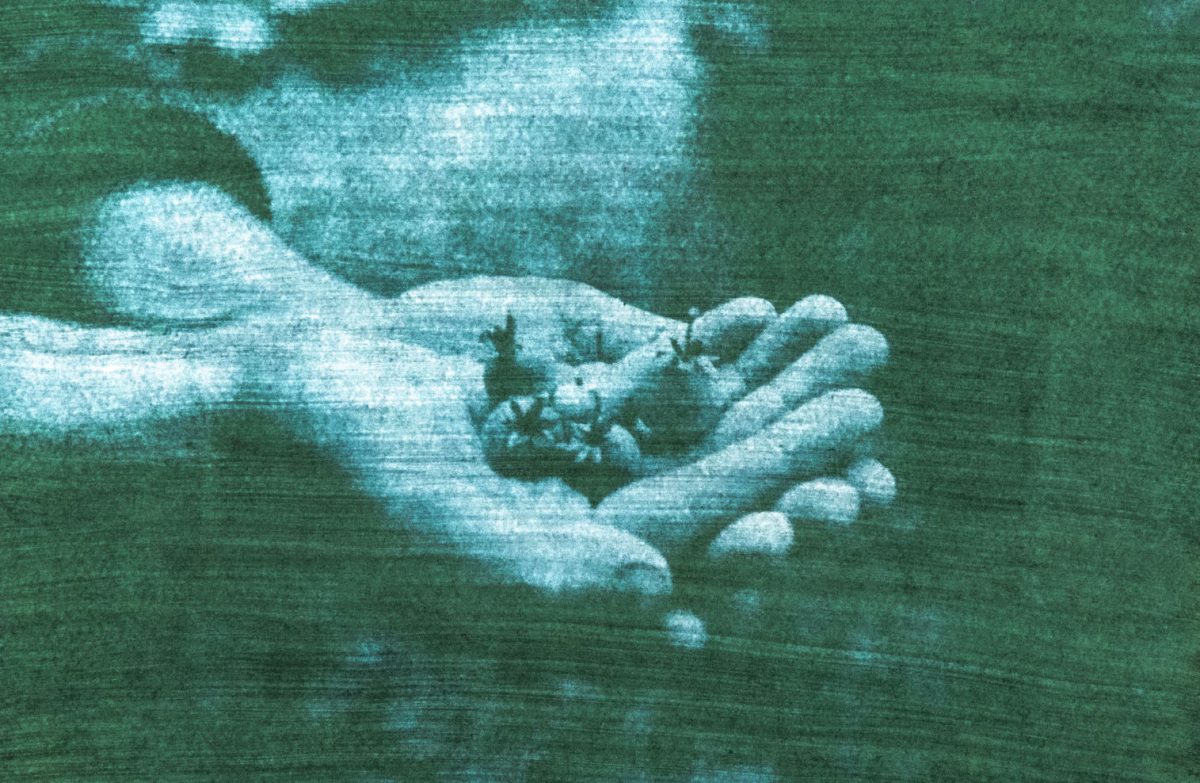
Alejandra Orjuela is a speculative Colombian filmmaker, photographer, and experimental artist, who works with biobased materials and alternative processes using analogue mediums. Orjuela is currently graduating from the CUN in Bogota, Colombia, and also holds a BA in Film & Media from CO; in 2023 she exhibited The Garden of Eden: Solar Equator in Der Greif’s Past & Present exhibition in Munich, Germany, and published it in Future Material Bank, Netherlands and Analog Cookbook, USA.
Find out more about Alejandra Orjuela here.
